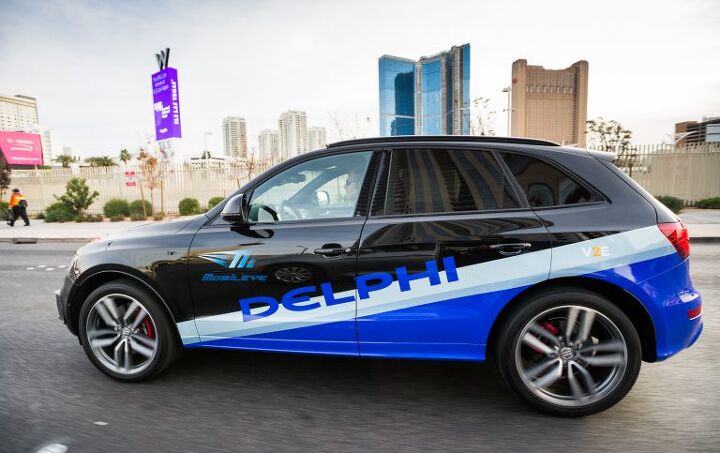#AutomotiveSuppliers
Despite Automaker Profits, It Was Another Rough Year for Suppliers
When the pandemic convinced practically every industry to press pause in 2020, supply chains became so crippled that just getting sectors of commerce rebooted became a challenge in itself. It was the business equivalent of a twenty-car pileup, with the automotive industry being hit particularly hard due to the complexity of its own supply lines. While the following year represented an improvement, production failed to stabilize to pre-pandemic levels.
The solution for automakers and dealerships was to begin demanding more money for cars. With vehicles in short supply, the value of new and used models blew through the roof. This move kept automakers largely in the black for 2021, despite a general inability (or unwillingness) to manufacture products at the normal pace. However, it didn’t help suppliers, who are haven’t been able to tack on the same premiums to individual components while still having to cope with rising economic hurdles.
Auto Industry Requests U.S. Government Help With Chip Shortage
The Alliance for Auto Innovation (AAI) is hard at work begging the federal government for help while the world continues coping with the semiconductor chip shortage, though it’s hardly the first time the industry has asked for or received administrative assistance. With pandemic lockdowns throwing global supply chains into a tailspin, U.S President Joe Biden said his administration would be seeking $37 billion and new legislation to address the chip shortage while federal agencies were directed to see what could be done in the interim.
But there’s little to be done with the brunt of the relevant manufacturing taking place in Asia, hence the AAI lobby requesting U.S. Commerce Department set aside some cash for domestic chip production in a new bill.
Hedge Fund Manager Convinced Tesla Shares Will Collapse
American investment manager and short-seller extraordinaire Jim Chanos claims Tesla is “headed for a brick wall.” Having deemed the automaker as structurally unprofitable, Chanos said, “Three years ago, this company was supposed to be making money [today]. And now, it’s supposed to be making money by 2020. I’m guessing by 2019, we’ll hear about 2025.”
However, while Tesla has taken on massive amounts of debt to ensure its evolution as company, investors haven’t seemed to mind. Its stock price has climbed from $33 a share in 2013 to almost $380 in September of 2017. As a short-seller, Chanos says he’s lost money on the company in the past since the stock price never seems to go down, and that’s what he finds the most alarming.
“Nobody is buying Tesla stock based upon the current business,” he said. “It’s all based on the future and the hope for half-a-million to a million Model 3s per year.”
Suppliers Scramble to Furnish Sophisticated Interiors (and Predict the Future)
You might not have noticed, but car interiors are growing increasingly more complex — not just in how they incorporate technology but also in the materials used. While the 1990s were awash in gray or beige plastics and upholstery, today’s vehicles source furnishings from a vastly broader palate.
Hyundai’s Ioniq is a prime example. In addition to using recycled plastics, it also uses bio-fabrics for the headliner and carpeting. Hyundai has also touted the use of sugarcane as a component for the interior’s soft-touch materials, while powdered wood and volcanic ash hides in harder surfaces.
OEMs are always trying to provide customers with something they can’t get elsewhere. More colors, different trim pieces, eco-friendly materials, and little embellishments that could be the deciding factor. Higher-trimmed vehicles from 2o years ago were primarily set apart by their upgraded mechanical components, adjustable seats, and superior electronics. With today’s vehicles already so well appointed, manufacturers are implementing custom stitching, chrome accents, and decorative lighting on a mass scale to inform occupants, “This is not a base model!”
It’s great news for consumers, but suppliers are scrambling to predict what automakers and their buyers will want next.
Delphi Gets Its Own Spinoff, Core Focus Now on Autonomy and EVs
Automotive supplier Delphi announced plans on Wednesday to spin off all operations tied to internal combustion engines and focus solely on electric propulsion and autonomous vehicles.
The move boosted share prices while underscoring the problems facing the industry’s old guard. That’s not to suggest that internal combustion engines are going to vanish anytime soon, but the investors who fund their development seem progressively less interested in backing them. An interesting choice, considering EV-maker Tesla is valued well above a traditional manufacturer like Ford — despite not being nearly as profitable.
Delphi says it will spin off its $4.5 billion powertrain division into a separate publicly traded company by early 2018 and is considering a new name.
Delphi Doubles Net Income In Q4 2013
In a statement made by Delphi Automotive this week, the supplier announced that they had more than doubled their net income in Q4 2013 to $298 million in comparison to $136 million in Q4 2012.





















Recent Comments